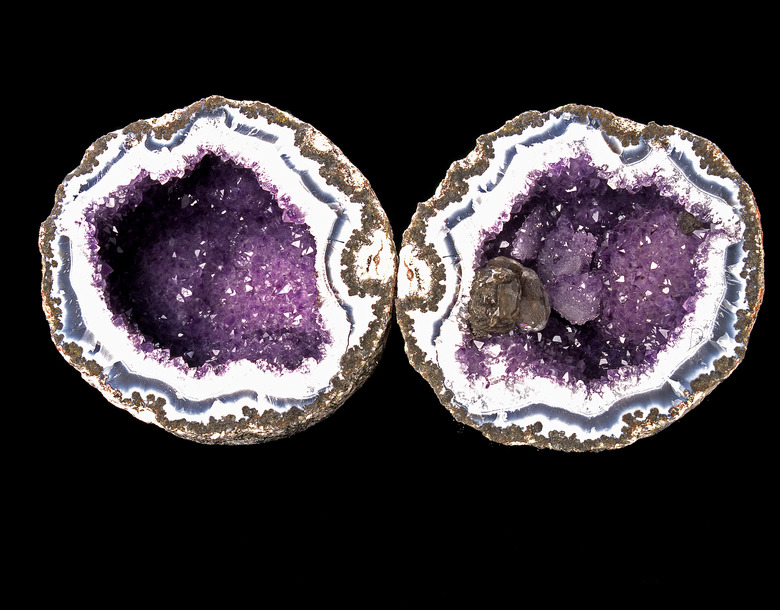Facts About Geodes
What are geodes? Geodes are hollow rocks lined with crystals, often colorful and irregularly shaped. The outer shell of a geode is usually bumpy or rough, and the general shape tends to be spherical or oblong. Geode crystals are made of minerals and are often composed of quartz. The color of geode crystals depends on the specific minerals present in the environment. Geodes, for kids, are a wonderful introduction to geology and provide a hands-on tool for learning how rocks are formed.
How Geodes Form
How Geodes Form
Geodes can occur within either volcanic or sedimentary rocks. Beginning as hollow bubbles inside other rocks, geodes form over many years. Basically, geodes are sedimentary rocks, the crystals within the bubbles forming as a result of a chemical reaction that leads to precipitation of minerals that become those crystals.
The outer shell of a geode is made of a very hard rock, and crystals form inside geodes only when the perfect combination of temperature, pressure changes and evaporation exists. As water seeps into the rocks around a geode, minerals are deposited inside the hollow rock. Typically, these minerals become agate and quartz, which form in layers very slowly, over the course of thousands of years.
Geode crystals can be large or small, filling the entire cavity of the outer shell or creating rings of crystals lining the shell. The outer rind of geodes is usually bumpy and made of a type of quartz called chalcedony. However, just because a rock has an outer layer of chalcedony and has a lumpy appearance does not mean that it is a geode – it must be cracked open to discover whether there are crystals inside.
Colors, Shapes and Sizes of Geodes
Colors, Shapes and Sizes of Geodes
It is possible to synthetically alter the color of geode crystals, but there is a wide range of naturally occurring geode colors. Most geodes are composed of chalcedony, quartz and agate.
Layers of chalcedony can be white, gray, blue, yellow or orange, and the color depends on the location where the geode formed. Quartz can appear transparent, white or purple; purple quartz is often referred to as amethyst, which is the most valuable variety of quartz. The color of agate layers inside a geode depend on the minerals in the stone, and can include shades of red, blue, green and copper.
Most often, geodes are round or oblong. They vary in size from under an inch to several feet wide. Geodes are similar to vugs, but geodes are typically smaller than vugs. The main difference between the two is that a geode can usually be removed from surrounding rock intact, while vugs are pockets or cavities of crystal formation that are part of a larger rock formation.
Hunting for Geodes
Hunting for Geodes
Most geodes are found in desert regions, but they can be found nearly anywhere that has limestone or volcanic rock in the environment. In the United States, geodes are most likely to be found in Indiana, Iowa, Missouri, Illinois, Kentucky and Utah. Across the globe, geodes are commonly found in Mexico, Australia, Brazil, Uruguay and Namibia.
Hunting for geodes takes time and patience but requires only a few simple tools. Safety googles, a hammer and a rock pick are all you need to get started searching for geodes.
Once you think you've found some geodes, there are several ways to reveal what's inside the rocks you've collected in the field. If you can't stand the suspense, you could crack your potential geode open with a heavier rock right when you find it, but this method may smash a valuable geode into many fragments. For a cleaner break, use a rock or tile saw to cut potential geodes in half evenly – which will give you one half to keep and another to share with a friend.
Cite This Article
MLA
Sloane, Christina. "Facts About Geodes" sciencing.com, https://www.sciencing.com/geodes-5377367/. 30 September 2021.
APA
Sloane, Christina. (2021, September 30). Facts About Geodes. sciencing.com. Retrieved from https://www.sciencing.com/geodes-5377367/
Chicago
Sloane, Christina. Facts About Geodes last modified August 30, 2022. https://www.sciencing.com/geodes-5377367/
